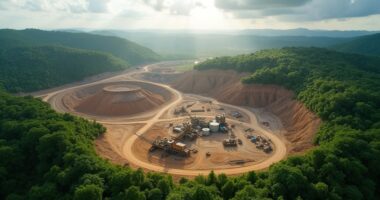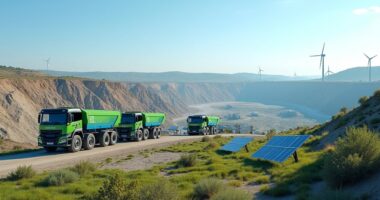The surge in demand for copper and lithium is revolutionizing global mining. Copper is key for renewable energy systems, while lithium fuels the electric vehicle (EV) boom. With a projected 50% increase in copper demand by 2040 and lithium needs skyrocketing eightfold within the same timeframe, mining companies are racing against time. Declining ore quality and supply chain headaches add to the excitement—and challenges. Curious about what this means for the future of energy and mining?
The Rising Demand for Copper and Lithium
What drives the world’s insatiable demand for copper and lithium? As we sprint toward a greener future, these essential minerals are becoming the rock stars of the energy transformation.
Copper, known for its unmatched conductivity, is the backbone of renewable energy systems—from solar panels that soak up sunshine to wind turbines that harness gusts of wind. By 2040, demand for copper is expected to skyrocket by 50% in a net-zero emissions scenario, and China is playing a starring role, gobbling up nearly 60% of global copper imports. Low-carbon technologies are driving the need for more copper, as they require significantly more minerals than fossil fuel-based technologies. This demand surge is partly fueled by the projected increase of critical minerals demand, which could rise almost fourfold by 2030.
Now, let’s pivot to lithium—the darling of the battery world. With its role in powering electric vehicles (EVs) and energy storage systems, lithium demand is projected to increase eightfold by 2040. Imagine that! A mineral growing in popularity faster than the latest social media trend. Currently, lithium-ion batteries account for over 90% of lithium consumption, primarily in EVs, and that number is only set to grow. The transition to sustainable future depends heavily on these battery technologies that store intermittent renewable energy.
Lithium is soaring in demand, set to increase eightfold by 2040, driven by electric vehicles and energy storage systems.
However, this booming demand isn’t without its hurdles. The copper supply chain faces challenges like declining ore quality and the dreaded phenomenon of reserve depletion. By 2035, it’s predicted that copper will only meet 70% of projected needs.
Meanwhile, lithium refining is a bottleneck, with over 75% of the good stuff processed in China—an inconvenience that could send shivers down any supply chain manager’s spine.
As the world scrambles to meet policy goals like net-zero emissions by 2050, investment in mining is essential. A whopping $330 billion is needed by 2040 to bridge copper supply gaps.
With Latin America holding a significant chunk of global reserves, countries like Chile and Argentina are poised to take center stage in this critical minerals boom.









